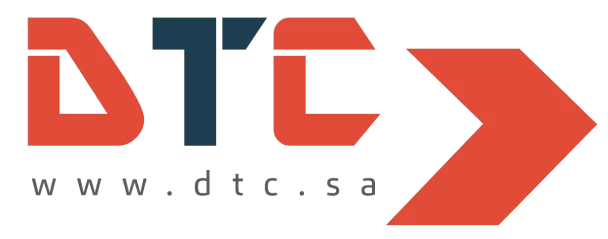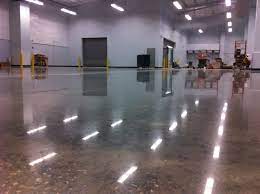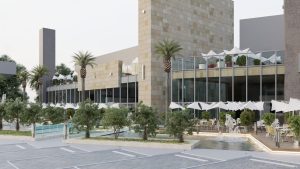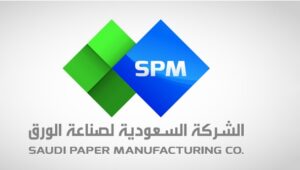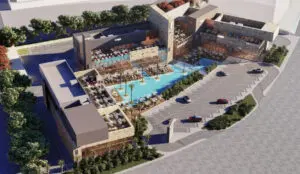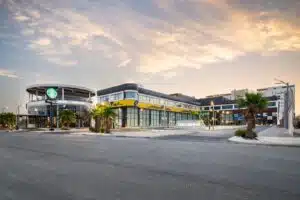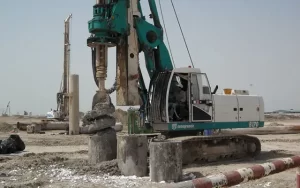Concrete Flooring Design for Forklifts
In the world of industrial construction, forklifts are the backbone of warehouse and factory operations. Whether transporting pallets, stacking inventory, or feeding production lines, forklifts impose heavy dynamic loads on floors. If the concrete flooring design is not properly engineered, slabs can crack, settle, or fail under pressure—leading to downtime, safety hazards, and costly repairs.
That’s why concrete flooring design for forklifts must go beyond standard slab requirements. It involves specialized parameters, reinforcement, flatness tolerances, and advanced finishing techniques. At DTC General Contracting, we combine decades of experience with technologies like laser screeds, SFRC mixes, and epoxy coatings to deliver forklift-ready industrial flooring across Saudi Arabia.
The Importance of Forklift-Compatible Flooring
Forklifts create unique structural challenges for concrete floors:
-
Point Loads: Unlike distributed loads, forklift wheels focus extreme weight on small surface areas.
-
Dynamic Impact: Repeated acceleration, braking, and turning generate stress cycles.
-
Racking Interfaces: Floors must support racks + forklift traffic simultaneously.
-
VNA Operations: Very Narrow Aisle trucks demand ultra-flat, dust-free floors.
A poorly designed floor results in:
-
Slab cracking under wheel loads.
-
Uneven settlement causing unsafe operations.
-
Increased maintenance costs.
-
Reduced forklift efficiency due to uneven travel.
Key Design Parameters for Forklift Concrete Flooring
1. Load Considerations
-
Static Load: Weight of forklifts when idle.
-
Dynamic Load: Forces during movement, braking, and turning.
-
Racking Loads: Concentrated column pressures that combine with forklift loads.
Typical forklift axle loads can exceed 80–100 kN, requiring heavy-duty slab designs.
2. Slab Thickness
-
150–200 mm for light warehouse traffic.
-
200–300 mm for medium to heavy forklift operations.
-
300+ mm with reinforcement or SFRC for heavy industries and cold storage.
3. Subgrade & Subbase Preparation
-
Compacted subgrade (CBR > 8%).
-
Subbase layer (150–200 mm crushed aggregate).
-
Tolerances within ±25 mm across large bays.
4. Reinforcement Options
-
Conventional Rebar Mesh for crack control.
-
Steel Fiber Reinforced Concrete (SFRC) for heavy-duty, jointless slabs.
-
Dowel Systems for load transfer at joints.
5. Flatness and Levelness
-
For forklift floors, flatness tolerances follow TR-34 or FM2 standards.
-
High flatness reduces tipping risks and increases forklift speed.
-
Laser screed systems ensure compliance.
6. Joint Design
-
Forklift floors require minimum joint spacing to avoid chipping.
-
Joint sealants and steel armoring protect against wheel impact.
-
Where possible, jointless SFRC slabs are preferred.
7. Surface Finishing and Protection
-
Hardener or dry-shake toppings improve abrasion resistance.
-
Epoxy/PU coatings create dust-free, chemical-resistant surfaces.
-
Polished finishes enhance cleanliness for food/pharma facilities.
Features of Forklift-Ready Concrete Floors
A properly designed forklift concrete floor should have:
-
High Load-Bearing Capacity – To withstand concentrated wheel loads.
-
Abrasion Resistance – To handle constant forklift movement.
-
Flatness & Levelness – Critical for VNA trucks and automated systems.
-
Crack Resistance – Through optimized mix design and reinforcement.
-
Low Maintenance Requirements – Dust-proof, durable surfaces.
-
Long Lifespan – 20–30 years with proper design and execution.
Tools & Technologies Used in Forklift Floor Construction
Laser Screed Machines
-
Deliver large slab pours with perfect flatness.
-
Meet strict FF/FL standards for VNA operations.
Ride-On Trowels
-
Used for finishing and polishing.
-
Provide smooth, dense, and dust-free surfaces.
Cutting & Jointing Tools
-
Diamond saws for precise contraction joints.
-
Sealant systems to protect against forklift impact.
Quality Testing Tools
-
FF/FL meters to check flatness.
-
Load testing for slab performance validation.
Case Studies: DTC Projects in Saudi Arabia
-
Al Saif Cold Storage Warehouses – Dammam
Heavy-duty forklift flooring designed with SFRC + laser screed, ensuring thermal stability under freezing conditions. -
Kameyat Specialties Factory – Dammam
Flooring designed for production forklifts and machinery vibration resistance. -
AMC Factory – Dammam
136,000 m² forklift flooring executed with jointed slabs and optimized curing. -
Tiypa Mall – Al Khobar
Flooring designed for retail and logistics traffic with epoxy protection.
Forklift Flooring in Saudi Arabia’s Climate
Saudi conditions require additional considerations:
-
High Temperatures → Retarders and SRAs to reduce shrinkage.
-
Coastal Zones (Dammam, Al Khobar) → Sulphate-resistant cement mixes.
-
Cold Storage Facilities → Thermal-resistant designs to prevent cracking.
Benefits of DTC’s Forklift Floor Solutions
-
Proven Expertise – 20+ years in Saudi industrial flooring.
-
Technology Integration – Laser screeds, SFRC, epoxy finishes.
-
Compliance – Floors built to SBC, TR-34, and FM2 standards.
-
Nationwide Service – Riyadh, Jeddah, Dammam, Al Khobar projects.
Conclusion
Concrete flooring design for forklifts is not just about pouring a thicker slab—it’s about engineering flatness, reinforcement, joint design, and durability to support decades of industrial activity.
With DTC General Contracting, clients in Saudi Arabia gain world-class forklift flooring solutions, delivered with advanced tools, tested design parameters, and a proven track record.
Call to Action
Need forklift-ready concrete flooring for your warehouse or factory in Saudi Arabia? Contact DTC today for customized design and execution.
📞 +966 566 41 1325
📧 info@dtc.sa
🌐 Visit Our Website
📺 YouTube | 💼 LinkedIn
